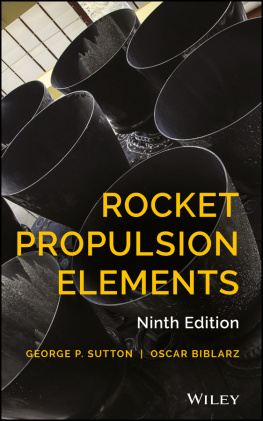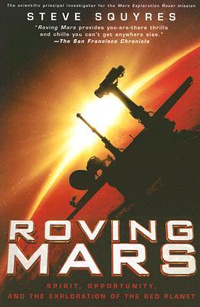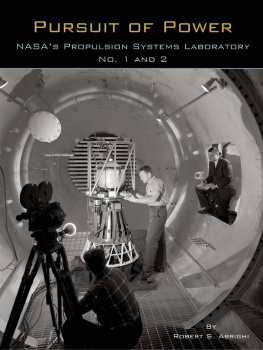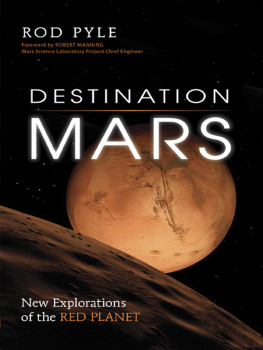Conway - Exploration and engineering: the Jet Propulsion Laboratory and the quest for Mars
Here you can read online Conway - Exploration and engineering: the Jet Propulsion Laboratory and the quest for Mars full text of the book (entire story) in english for free. Download pdf and epub, get meaning, cover and reviews about this ebook. City: Mars (Planet, year: 2016, publisher: Johns Hopkins University Press, genre: Romance novel. Description of the work, (preface) as well as reviews are available. Best literature library LitArk.com created for fans of good reading and offers a wide selection of genres:
Romance novel
Science fiction
Adventure
Detective
Science
History
Home and family
Prose
Art
Politics
Computer
Non-fiction
Religion
Business
Children
Humor
Choose a favorite category and find really read worthwhile books. Enjoy immersion in the world of imagination, feel the emotions of the characters or learn something new for yourself, make an fascinating discovery.

- Book:Exploration and engineering: the Jet Propulsion Laboratory and the quest for Mars
- Author:
- Publisher:Johns Hopkins University Press
- Genre:
- Year:2016
- City:Mars (Planet
- Rating:3 / 5
- Favourites:Add to favourites
- Your mark:
- 60
- 1
- 2
- 3
- 4
- 5
Exploration and engineering: the Jet Propulsion Laboratory and the quest for Mars: summary, description and annotation
We offer to read an annotation, description, summary or preface (depends on what the author of the book "Exploration and engineering: the Jet Propulsion Laboratory and the quest for Mars" wrote himself). If you haven't found the necessary information about the book — write in the comments, we will try to find it.
Conway: author's other books
Who wrote Exploration and engineering: the Jet Propulsion Laboratory and the quest for Mars? Find out the surname, the name of the author of the book and a list of all author's works by series.
Exploration and engineering: the Jet Propulsion Laboratory and the quest for Mars — read online for free the complete book (whole text) full work
Below is the text of the book, divided by pages. System saving the place of the last page read, allows you to conveniently read the book "Exploration and engineering: the Jet Propulsion Laboratory and the quest for Mars" online for free, without having to search again every time where you left off. Put a bookmark, and you can go to the page where you finished reading at any time.
Font size:
Interval:
Bookmark:
Exploration and Engineering
NEW SERIES IN NASA HISTORY
Exploration and Engineering
The Jet Propulsion Laboratory and the Quest for Mars
ERIK M. CONWAY
Johns Hopkins University Press
Baltimore
2015 Johns Hopkins University Press
All rights reserved. Published 2015
Printed in the United States of America on acid-free paper
Johns Hopkins Paperback edition, 2016
2 4 6 8 9 7 5 3 1
Johns Hopkins University Press
2715 North Charles Street
Baltimore, Mary land 21218-4363
www.press.jhu.edu
The Library of Congress has cata loged the hardcover edition of this book as follows:
Conway, Erik M., 1965
Exploration and engineering : the Jet Propulsion Laboratory and the quest for
Mars / Erik M. Conway.
pages cm
Includes bibliographical references and index.
ISBN 978-1-4214-1604-5 (hardcover : alk. paper) ISBN 978-1-4214-1605-2 (electronic) ISBN 1-4214-1604-2 (hardcover : alk. paper) ISBN 1-4214-1605-0 (electronic) 1. Space flight to Mars. 2. Mars (Planet) Exploration. 3. Jet Propulsion Laboratory (U.S.) I. Title.
TL799.M3C66 2015
523.43072'3dc23
2014018368
A cata log record for this book is available from the British Library.
ISBN-13: 978-1-4214-2122-3
ISBN-10: 1-4214-2122-4
Special discounts are available for bulk purchases of this book. For more information, please contact Special Sales at 410-516-6936 or specialsales@press.jhu.edu.
Johns Hopkins University Press uses environmentally friendly book materials, including recycled text paper that is composed of at least 30 percent post-consumer waste, whenever possible.
CONTENTS
ACKNOWLEDGMENTS
I began this work about a year after moving to the Jet Propulsion Laboratory from the NASA Langley Research Center, where I had been a contract historian. JPL had not had a staff historian since the mid-1970s, and during 2004, Blaine Baggett, director of the Office of Communication and Education at JPL, and Charles Elachi, JPL director, decided to hire me. I have them to thank for supporting this work. I also need to thank Margo Young and Robert Powers, former and current heads of JPLs library and archives section, for their assistance, as well as Julie Cooper, JPLs archivist; Mary Beshid, Susan Hendrickson, and Kay Schardein, its records managers; and project librarians Julie Reiz, Brent Shockley, and Suzanne Sinclair. Video librarian Sherri Rowe-Lopez provided rapid access to JPLs huge collection of audio-visual material. And thanks also to Mickey Honchell, JPLs interlibrary loan librarian, for handling myriad odd requests with alacrity.
This narrative has been woven from a variety of technical and scientific documents, from media accounts, and from extensive interviews with JPL engineers, managers, and scientists. The interviewees are too numerous to thank individually, but several of them read and critiqued all or part of the book. Thanks to Blaine Baggett, John Callas, Glenn Cunningham, Barry Goldstein, Matthew Golombek, Fuk Li, Robert M. Manning, Daniel J. McCleese, Brian Muirhead, George Pace, and Guy Webster for the extensive and valuable comments. All errors that remain are, of course, my own.
This is a JPL-centric history of Mars exploration, as the Laboratory has been the lead center (though the term has fallen from use) for Mars exploration since the late 1980s. But the Mars Observer, Mars Global Surveyor, Mars Climate Orbiter, Mars Polar Lander, Mars Reconnaissance Orbiter, and Mars Phoenix missions were carried out primarily by what are called systems contractors in the aerospace business. For all but Mars Observer, the systems contractor was Lockheed Martins Astronautics group in Colorado. LMA, as it is known colloquially, allowed me to interview several of its senior engineers and managers for this history, and thanks go to Edward Euler, Steven Jolly, Claude Bud McAnally, Parker Stafford, and Loren Zumwalt, for their time and interest in this project. I also gained great insight from an interview with Pioneer Aerospaces parachute expert, Allen Witkowsky, whom I met accidently one evening at Lucky Baldwins in Pasadena.
At the NASA History Office in Washington, chief historians Steven Dick and Bill Barry, and their deputy, Steve Garber, supported this work through many twists and turns. Jane Odom, the NASA chief archivist, and her staff archivists Colin Fries, John Hargenrader, and Elizabeth Suckow, provided access to materials from early in this period. Former NASA chief historian and long-time friend Roger Launius supported this endeavor in myriad ways, as well.
My acquisitions editor at Johns Hopkins University Press, Bob Brugger, patiently awaited this manuscript, which took a couple years longer and several more chapters than originally planned, and handled its production with aplomb; and I want to thank the Press staff for preparing a beautiful volume.
Finally, several individuals at JPL gave me access to personal files that filled various-size holes in my research. JPLs current director, Charles Elachi, granted me access to some files from his tenure as head of the old Space and Earth Science Projects Directorate (SESPD); chief scientist Daniel McCleese provided records earlier in the 2000s; Samuel Thurman offered a large digital collection of his records from the Mars Climate Orbiter and Polar Lander projects; Robert M. Manning and Tommaso Rivellini lent records of the Mars Pathfinder, Mars Exploration Rover, and Mars Smart Lander projects as well as the Bubble Team studies of 2000; Mark Adler shared his original Mars Mobile Pathfinder proposal; and Donna Shirley, retired Mars program director, gave access to her records of those years. All of these documents are archived in an electronic repository at JPL known as the Historians Mars Exploration Collection. This history would be far poorer without them.
While this book is the product of many years research at JPL and was read and critiqued by many people there, it represents my opinions and interpretations alone, not those of JPL, the California Institute of Technology, or the National Aeronautics and Space Administration. It was released for public audiences under URS234014.
Exploration and Engineering
Introduction
Mars has a peculiar hold on the minds of Americans. A vast range of American science fiction posits martian civilizations. Scientific literature of the early twentieth century assumed martian civilizations, too, although as evidence accumulated during the century, native martians were reduced successively from ancient civilizations to fungus-like plantlife to microbes in the soil to, finally, maybe nanomicrobes under the surface.
Driven by science, fantasy, and the Cold War, the United States and former Soviet Union sent many robotic visitors to Mars. The earliest successful voyages, by the American robotic Mariners 4, 6 and 7, carried cameras and atmospheric remote sensing instruments. But Mars appeared sterile, and not much at all like Earth, despite being counted among the Earthlike planets of the solar system.
The first planetary orbiter, the Jet Propulsion Laboratorys Mariner 9, completed a photographic reconnaissance of the entire surface of Mars in 1971. It arrived in the middle of a planetary-scale dust storm and was reprogrammed to wait out the storm. The resulting photographs revealed a terrain of enormous diversity. In addition to the cratering, Mars had volcanoes far larger than anything on Earth and a canyon system whose length was larger than North America. The planet was also lopsided, with its southern hemisphere having a much higher average elevation than the northern hemisphere. And if crater counts were a reliable guide to age, the southern hemispheres surface was much older than the northern. Mars was a very strange place.
Mars also had no visible water. But it did have terrain features that looked a lot like water-carved features on Earthriver valleys and the like. And it had water vapor in its atmosphere, although not much. Water vapor molecules would disintegrate over time from ultraviolet radiation bombardment (as Mars has no atmospheric oxygen, it also has no ozone layer), so there had to be water or water ice somewhere within reach of the atmosphere to replenish even that small amount. But nobody could find this ice; there was some evidence that the martian polar ice caps were mostly water ice, with a thin top layer of carbon dioxide ice (dry ice), but it wasnt widely accepted. Arguments raged over the whereabouts of Marss water within the small community of Mars specialists.
Next pageFont size:
Interval:
Bookmark:
Similar books «Exploration and engineering: the Jet Propulsion Laboratory and the quest for Mars»
Look at similar books to Exploration and engineering: the Jet Propulsion Laboratory and the quest for Mars. We have selected literature similar in name and meaning in the hope of providing readers with more options to find new, interesting, not yet read works.
Discussion, reviews of the book Exploration and engineering: the Jet Propulsion Laboratory and the quest for Mars and just readers' own opinions. Leave your comments, write what you think about the work, its meaning or the main characters. Specify what exactly you liked and what you didn't like, and why you think so.














